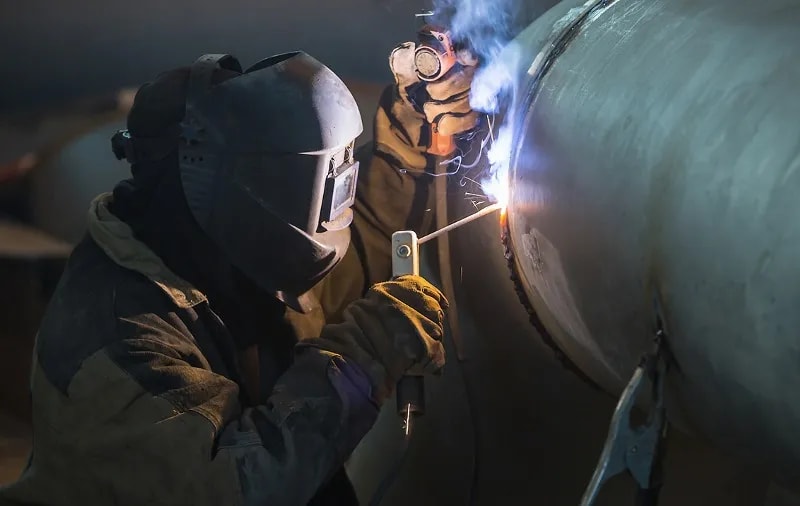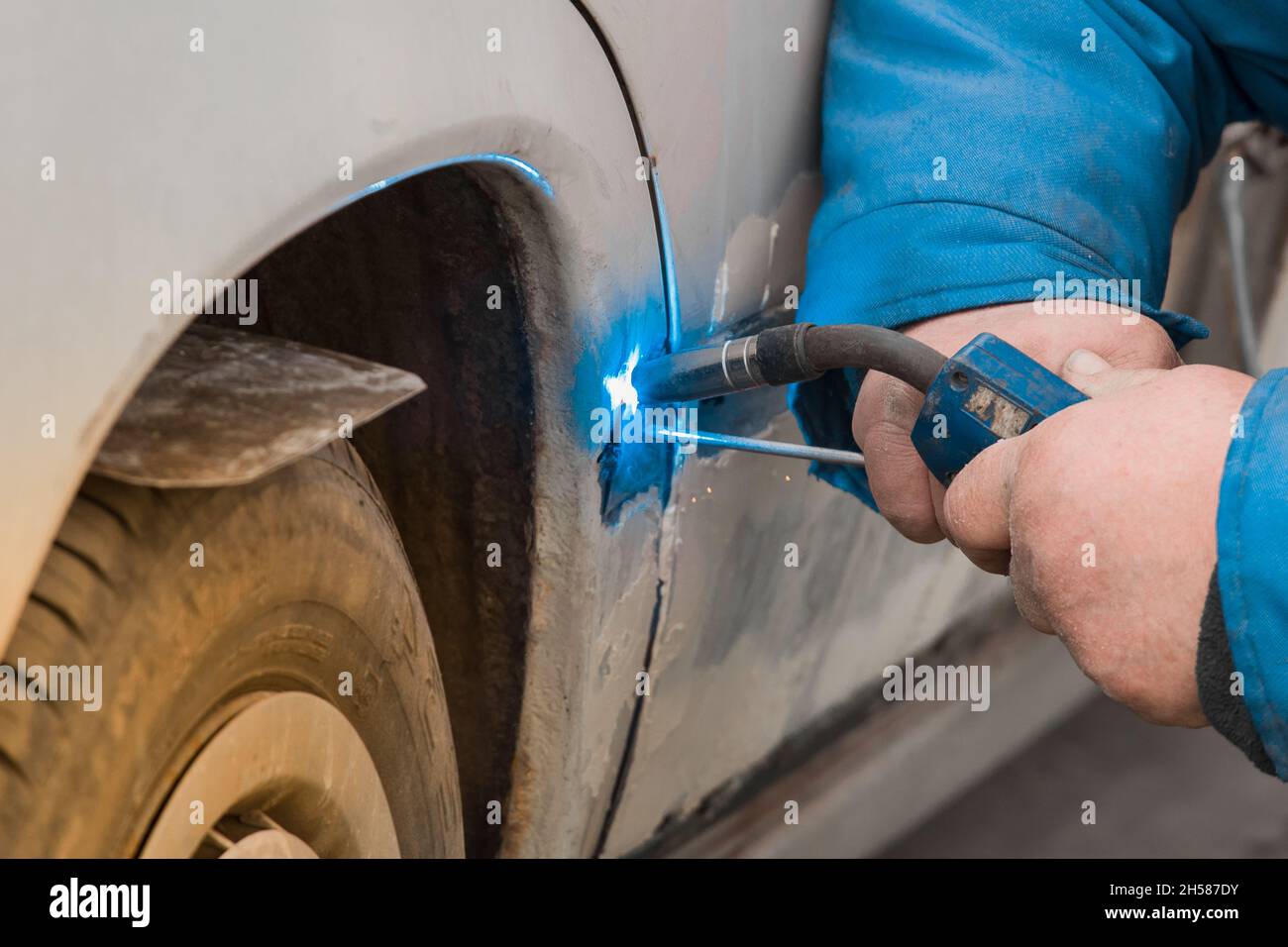Usual Welding Repair Work Issues and Just How to Address Them Efficiently
Welding repair services often encounter a range of problems that can threaten the honesty of the end product. Typical issues consist of inadequate infiltration, porosity, and misalignment, to name a few. Each problem offers one-of-a-kind challenges that need details strategies for resolution. Recognizing these problems is necessary for welders aiming to improve their results and skills. This discussion will certainly check out these typical welding fixing problems and effective methods to address them.
Inadequate Penetration
Poor infiltration takes place when the weld metal fails to fully fuse with the base product, leading to weak joints and prospective architectural failings. This problem often stems from insufficient heat input, wrong electrode angle, or inappropriate welding speed. Welders may encounter insufficient infiltration as a result of a miscalculation of the essential criteria for a details product density or kind. Furthermore, contamination on the base material's surface can prevent effective bonding, worsening the problem. To address insufficient infiltration, welders should assure suitable settings on their tools and keep a tidy job surface. Routine examination of welds is suggested to determine any type of deficiencies early, enabling prompt adjustments and the prevention of jeopardized architectural honesty in bonded assemblies.
Porosity
Porosity is a common problem in bonded joints that shows up as little gas bubbles caught within the weld steel. This issue can compromise the integrity of the weld, bring about lowered toughness and prospective failing under stress and anxiety. Montana Mobile Welding and Repair Fabrication. Porosity generally occurs from contamination, moisture, or improper welding methods, which enable gases to get away right into the molten weld swimming pool. To deal with porosity, welders must guarantee appropriate surface preparation, keep a clean working atmosphere, and utilize suitable welding specifications. Additionally, selecting the right filler material and shielding gas can minimize gas entrapment. Regular assessment and testing of welds can assist recognize porosity early, ensuring prompt rehabilitative activities are taken, thereby maintaining the top quality and reliability of the welded structure
Imbalance
Imbalance in welding can emerge from different variables, including incorrect arrangement and thermal development. Understanding the root creates is necessary for efficient resolution. Numerous modification strategies are available to straighten components and guarantee structural stability.
Root causes of Misalignment
Welding imbalance commonly comes from a selection of underlying issues that can compromise structural honesty. One main reason is inappropriate fit-up of components prior to welding, which can lead to spaces and unequal surfaces. Variations in thermal growth throughout the welding procedure can also result in distortion, particularly if the materials being signed up with have different coefficients of expansion. In addition, poor fixturing and clamping might fail to hold components safely in position, bring about motion throughout welding. Badly maintained devices, consisting of welding machines and tools, may present incongruities in the weld grain, further contributing to imbalance. Lastly, operator mistake, originating from inadequate training or experience, can likewise play a significant duty in creating misaligned welds.
Correction Techniques Readily Available
Addressing imbalance efficiently calls for a combination of corrective methods customized to the particular issues available. One common method is the use of jigs or components to hold components in the appropriate setting during welding, making certain constant placement. Furthermore, pre-heating the materials can help in reducing distortion and improve fit-up. For considerable misalignment, mechanical realignment techniques, such as using hydraulic jacks or clamps, can be used to remedy the position before welding. Post-weld warmth therapy might additionally be required to soothe stress and anxieties triggered by imbalance. Mindful evaluation and modification throughout the setup stage can avoid imbalance concerns from coming to be substantial problems, advertising a smoother welding process and boosting overall structural honesty.
Distortion
Distortion is a common challenge in welding that can arise from numerous elements, including unequal heating & cooling. Recognizing the sources of distortion is essential for applying effective avoidance techniques. Addressing this issue not only improves architectural stability but also enhances the overall high quality of the weld.
Sources of Distortion
When based on the intense warmth of welding, products typically undertake changes that can lead to distortion. This sensation mostly emerges from thermal development and tightening throughout the welding procedure. As the weld location warms up, the product increases; upon air conditioning, it acquires, which can produce inner stresses. Additionally, irregular heating throughout a workpiece can exacerbate these anxieties, leading to warping or bending. The sort of material likewise plays a substantial role; steels with varying thermal conductivity and coefficients of growth might react in different ways, causing uncertain distortions. Furthermore, inadequate joint design and inadequate fixturing can add to misalignment throughout welding, raising the possibility of distortion. Comprehending these reasons is crucial for effective welding repair work and prevention methods.
Avoidance Techniques
Effective avoidance methods for distortion throughout welding focus on managing heat input and making sure correct joint design. Maintaining a constant warm input assists to reduce thermal growth and contraction, which can lead to distortion. Making use of techniques such as preheating the workpiece can likewise minimize the temperature slope, promoting uniform heating. In addition, choosing proper joint layouts, such as T-joints or lap joints, can enhance security and reduce stress focus. Executing appropriate fixturing to protect the workpieces in place better aids in keeping positioning throughout the welding procedure. Staggered welding sequences can distribute heat much more equally, avoiding local distortion. By applying these techniques, welders can greatly reduce the possibility of distortion and improve the total quality of their welds.
Cracking
Splitting is a common concern come across in welding repair work, often arising from numerous elements such as incorrect cooling prices, product choice, or inadequate joint prep work. The incident of splits can substantially endanger the stability of the weld, resulting in prospective failings throughout procedure. check here To address this problem, welders must first analyze the origin causes, guaranteeing that materials work and suitably selected for the details application. In addition, regulating the air conditioning rate throughout the welding procedure is necessary; rapid cooling can generate tension and cause splitting. Proper joint style and prep work additionally add to lessening the risk. Carrying out these methods can enhance weld top quality and toughness, inevitably minimizing the possibility of cracking in ended up weldments.

Insufficient Fusion
A considerable problem in welding repair work is insufficient fusion, which takes place when the weld metal does not adequately bond with the base material or previous weld passes - Belgrade Fabrication. This problem can cause weaknesses in the joint, potentially jeopardizing the honesty of the welded structure. Elements adding to insufficient combination consist of insufficient warm input, improper welding technique, and contamination of the surfaces being signed up with. To address this issue properly, welders need to assure appropriate pre-weld cleansing and surface area prep work, as well as readjust their welding specifications to accomplish sufficient infiltration and fusion. Routine examination throughout the welding process can likewise aid determine insufficient blend early, permitting prompt corrective actions to enhance the general quality of the weld
Overheating
While welding repairs can boost structural integrity, overheating provides a substantial difficulty that can lead to material degradation. Excessive warmth throughout welding can modify the mechanical buildings of steels, causing minimized strength, enhanced brittleness, and bending. This sensation is specifically vital in high-stress applications where architectural integrity is extremely important. Determining getting too hot can involve visual assessments for discoloration or distortion, along with keeping track of temperature during the welding process. To alleviate the risks linked with overheating, welders should utilize proper strategies, such as regulating warm input, readjusting travel rate, and making use of ideal filler materials. Additionally, executing pre- and post-weld warmth treatments can help bring back product buildings and improve the general high quality of the fixing, making sure lasting performance and safety.
Regularly Asked Questions
What Are the Usual Indications of a Welding Issue?

Just How Can I Evaluate My Welds for Top quality?
To examine welds for top quality, one can utilize aesthetic evaluations, ultrasonic testing, and radiographic methods. Each technique guarantees structural honesty, identifies problems, and validates adherence to defined criteria, eventually enhancing the dependability of the welded joints.
What Security Precautions Should I Take While Welding?
When welding, one should focus on security by putting on proper individual safety devices, ensuring proper air flow, safeguarding flammable materials away, keeping a clean work area, and recognizing environments to stop injuries and accidents.
Can I Fix a Weld Without Redesigning the Entire Joint?
Repairing a weld without redesigning the whole joint is possible, depending on the damages (Fabrication). Strategies such as grinding, adding filler product, or making use of a welding process can successfully resolve specific imperfections while protecting the surrounding framework
What Tools Are Vital for Efficient Welding Services?
Essential tools for reliable welding repairs include a welding machine, cord brush, mill, safety gear, clamps, and filler materials. Each device plays an important function in making sure quality and security throughout the repair service procedure. Porosity generally emerges from contamination, wetness, or incorrect welding methods, which permit gases to run away into the molten weld pool. Poorly kept equipment, consisting of welding makers and tools, may present variances in the weld bead, more adding to misalignment. When subjected to the extreme warmth of welding, products commonly undergo modifications that can lead to distortion. Cracking is an usual issue run into in welding repair services, often resulting from different variables such as incorrect air conditioning rates, product option, or inadequate joint preparation. A considerable problem in welding repair services is insufficient blend, which takes place when the weld steel does not appropriately bond with the base product or previous weld passes.